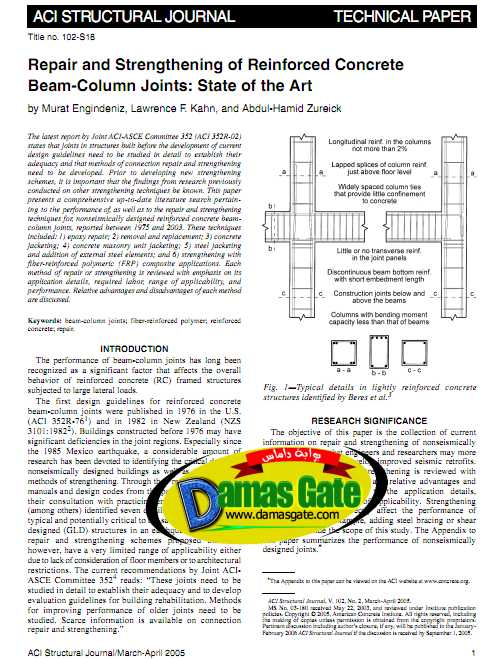Repair and Strengthening of Reinforced Concrete Beam-Column Joints State of the Art

INTRODUCTION
The performance of beam-column joints has long been
recognized as a significant factor that affects the overall
behavior of reinforced concrete (RC) framed structures
subjected to large lateral loads.
The first design guidelines for reinforced concrete
beam-column joints were published in 1976 in the U.S.
(ACI 352R-76 1) and in 1982 in New Zealand (NZS 3101:1982 2
). Buildings constructed before 1976 may have
significant deficiencies in the joint regions. Especially since
the 1985 Mexico earthquake, a considerable amount of
research has been devoted to identifying the critical details of
nonseismically designed buildings as well as to developing
methods of strengthening. Through their reviews of detailing
manuals and design codes from the past five decades and
their consultation with practicing engineers, Beres et al.
(among others) identified seven details (shown in Fig. 1) as
typical and potentially critical to the safety of gravity loaddesigned
(GLD) structures in an
earthquake. Most of the repair and strengthening schemes proposed thus far,
however, have a very limited range of applicability either due
to lack of consideration of floor members or to architectural restrictions.
The current recommendations by Joint ACIASCE
Committee 352 4 reads: “These joints need to be
studied in detail to establish their adequacy and to develop
evaluation guidelines for building rehabilitation. Methods
for improving performance of older joints need to be
studied. Scarce information is available on connection
repair and strengthening.” 3
Download
http://s18.alxa.net/s18/srvs2/02/002...of.the.Art.rar